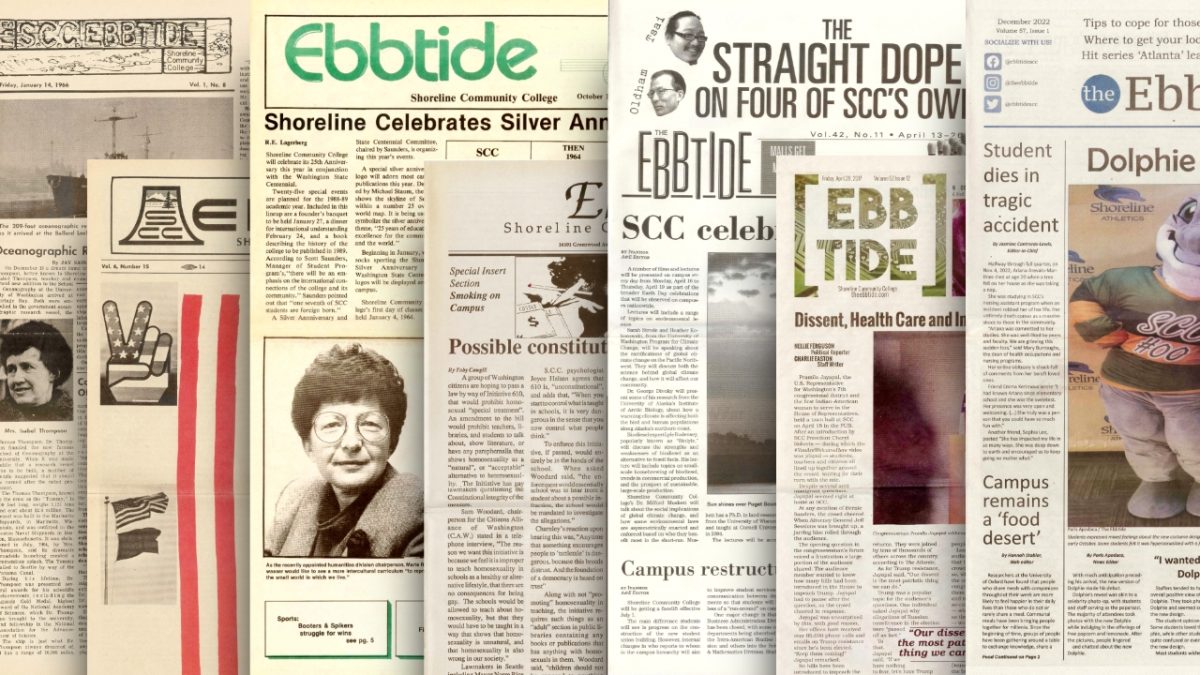When you look up into the sky, what do you feel?
Is there anything out there? All of this and more is touched upon in James Gray’s “Ad Astra,” the sleek sci-fi flick which premiered in theaters nationwide last month.
Ad Astra’s opening titles state that it is set in “the near future; a time of both hope and conflict” when humanity looks to the stars for guidance.
Right off the bat, it is refreshing to witness a brand new, original science fiction movie with A-List actors getting a chance to shine.
Brad Pitt, who was also recently seen in Quentin Tarantino’s “Once Upon a Time in Hollywood,” stars as fictional astronaut Roy McBride — a man who is quickly thrown head-first into a whirlwind of interplanetary turmoil and self-discovery.
The Dark Side
From the beginning, it is clear that Roy internalizes his feelings through narration by conducting a series of one-sided “psychological evaluations” that he speaks aloud into a receiver (a la video diary) to inform his higher-ups about his health surrounding different missions.
It isn’t difficult to pick up on his deep-set void of emotion, save for routine flashbacks to a past relationship that implies he once had a more fulfilling life before becoming distant.
But Roy’s life is about to change drastically — and it starts during a round of routine work on the ultra-tall international space antenna, which stretches upward from Earth to the edge of the atmosphere.
When what seems like an electrical malfunction occurs overhead, a horrific scene ensues as Roy hangs on to the antenna’s metal exterior before ultimately having to make the long fall back down to Earth via parachute.
On the ground, a news report states that a series of electrical storms from space are being dubbed “The Surge.” It’s not until a later classified meeting when Roy is informed that these surges are cosmic ray bursts from Neptune, thus releasing anti-matter that threatens the entire solar system.
Audiences are then introduced to The LIMA Project, which served as the first manned expedition to the outer solar system. Roy’s father, Clifford (Tommy Lee Jones) commanded the mission but disappeared, leaving Roy with a life devoid of his presence — until they inform Roy that he may still be alive.
A Poignant Mission
Roy is sent to Mars, to the only base unaffected by the surge, where it will be up to him to try and reestablish contact with his father in an attempt to seek answers as well as personal closure.
In an early stage of his journey, Roy and a group of fellow astronauts take a lunar rover across the moon, passing by a green sign noting the lunar path they’re on — much like it would appear next to a highway on Earth.
It is during this sequence that Roy reaches up and touches flyaway moon dust as it passes overhead while they drive, almost as if he’s on the verge of reconnecting with his feelings; but a peaceful scene quickly turns foreboding as unidentified rovers appear on their tail.
When the rover’s passengers turn out to be pirates, a shootout ensues as the two groups battle each other with orange and blue laser-like weapons as the vehicles drive side-by-side, perhaps doubling as the very first “car chase” on the moon — a subtle concept that marks a historical moment in both science fiction and cinema as a whole.
Roy manages to escape the carnage as his vehicle soars off the edge of a deep moon crater; but this being space, it drifts down into it before landing unscathed, and Roy heads into the darkness.
Facing Fears
En route to Mars, Roy ends up hitching a ride with the seemingly easy-going crew of another ship who are listening to Dean Martin croon distantly in the background.
It is soon announced that they have to stray off course to answer a mayday call on another spacecraft — an order which Roy protests but to no avail.
As the crew makes the spacewalk to the ship in question, tension builds as Roy prepares to open the ship’s hatch, which is visible in the form of a reflection in his helmet that establishes what he’s looking at before he lifts his visor and opens the door.
Soon, the crew is exploring the deserted, fluorescently-lit and eerily empty spacecraft that provides a dose of uneasiness comparable to the protagonists of “Alien” (1979) exploring their surroundings before terror strikes, and sure enough, it does — with shocking results.
When they finally arrive on the Red Planet to more run-down, industrial conditions and stormy surroundings, the cinematography has a chance to shine with dimly lit hallways, claustrophobic dim orange lighting and flashing red lights.
Although this is supposed to be the gateway to his father, it’s not long before Roy feels as though he’s being used by the people who got him there.
Sight and Sound
Despite its futuristic setting and situation, the technology in the spaceships isn’t unlike modern space interiors and controls which gives it a dose of realism.
The film is filled with a surprising amount of excellent, small details. For instance, on the flight Pitt asks a stewardess for the “blanket and pillow” pack which costs $125 — a shocking amount at first until you realize the movie is observant enough to take inflation into account.
A contemplative, relaxing score compliments Roy’s spaceflight to his first stop: The Moon. The airline of choice is Virgin Airlines, an aesthetic decision reminiscent to commuter spacecraft in “2001: A Space Odyssey” (1968) donned in Pan American branding.
Roy arrives on the moon, and walks out into an almost amusing idea of a moon transit center. “Welcome to the moon” is seen on a sign, followed by a variety of typical airport-esque vendors donning the recognizable logos of DHL and Subway Sandwiches (also similar to the period-accurate product placement seen inside “2001: A Space Odyssey’s” space-age commuter spacecraft).
“Ad Astra’s” ethereal soundtrack, composed by Max Richter, is filled with bittersweet synths and strings that stand out as unique from the beginning of the film.
Even the sound design excels: When Roy enters a soundproof recording booth to record a message to contact his father, the silence of the booth sounds accurately deafening, even to viewers of the movie.
The Moral of the Story
“Ad Astra” dabbles in a handful of philosophical concepts. Through an edge-of-your-seat series of events, the audience learns that Roy’s father isn’t quite what he seemed, much like how Roy’s once-dismal outlook wasn’t quite what it seemed.
The film deals with both hope and the sudden absence of it and accepting the harsh reality that life may not need to have any “meaning.” Life is what you make it — and what better backdrop to tell this story than the vastness of space?
In the end, Roy slowly but surely shows signs of positivity; a hopeful turn in a series of otherwise melancholic events.
A recurring moral of the film — the ability to find light in a time of darkness — is summed up in the poignant words of Roy McBride: “I am unsure of the future, but I’m not concerned.”







